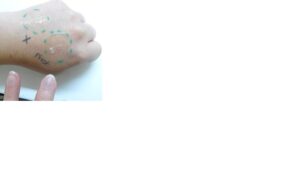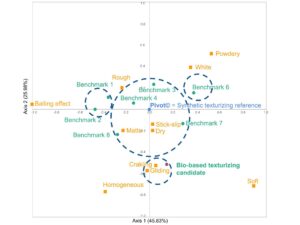
News & Press
Sensory Analysis: the Pivot© Profile, a Useful Tool in the Development of a New Ingredient



08 November 2022
For the products dedicated to be applied on skin or hair, sensoriality as perceived by our five senses (sight, smell, touch, taste, hearing), is the first benefit felt by the consumers. As such, it is an essential factor in consumer decision to purchase or repeat purchasing of a cosmetic product. Sensory analysis is thus a key step when creating a new formulation or designing a new ingredient. Xylan ingredients, which will be developed within Enxylascope project, would be key ingredients for texture and sensoriality of formulations. Such approach will thus be key to confirm the interest of these ingredients
Sensory analysis is an objective measure of the effects of a product. Therefore it requires prior training of the panelists to give accurate and repeatable as possible results! Guidelines are provided by AFNOR (Association Française de Normalisation) or ISO (International Standards Organization) such as ISO 4121, ISO 11035, ISO 11036. It includes a set of techniques (triangle test, ranking test, sensory profile, quantitative descriptive analysis etc), selected based on the purpose that may be to describe a product or compare products to each other. Cosmetic manufacturers generally evaluate sophisticated formulations which contain different combinations of ingredients. The challenge of a raw material supplier is to identify the role of a particular ingredient on sensory properties by comparing simple formulas in which only this ingredient changes. The specific sensory signature of an ingredient can be an essential point of differentiation when launching a new ingredient on the market.
Let’s imagine a concrete context of research for a new ingredient: the design of a new bio-based texturizing agent dedicated to substitute a synthetic reference. In this context, several candidates may emerge and there is a need to compare the sensory profile of the candidates with the synthetic reference, as well as to position this new ingredient versus bio-based benchmarks (already available on the market). When a lot of options are required to be compared, traditional triangular comparison tests can not be made and traditional descriptive methodology with defined descriptors can miss unexpected properties. Pivot© profile (Thuillier et al., 2015), based on the comparison of all products in pairs with a reference, provides the solution. The method indeed consists in collecting a free description of the differences, more or less, between two products: a target product in relation to a constant product called the pivot (here the synthetic texturizing reference). The repetition of this task using the same product as the pivot, allows supplying a complete description of the set of ingredients.
The panelists evaluate chronologically the product’s appearance in the jar, spreading with alternative rotations on the back of the hand (amount equivalent to a spatula tip), and skin afterfeel after 2 minutes, in a standard sensory booth environment.

After applying synonym grids and grouping terms, the data are statistically processed by a correspondence factor analysis to study the association between the products and the descriptors as well as the significance of the differences. The results are represented by a superimposition of the two universes: sensory descriptors and products, with relative positions. Figure 2 illustrates the Pivot© profile determined with the best bio-based texturizing candidate in a simple gel vehicle containing 5% of texturizing agent. The pivot is positioned in the center of the graph. The more a product deviates from the center, the more it differs from the pivot on certain descriptors. Four clusters of products are identified and visualized by dot lines: Benchmarks 1 and 2, characterized by balling effect, less soft and powdery than the pivot; Benchmarks 3, 4, 7 and 8, equivalent to the pivot; Benchmark 6, softer and powdery than the pivot, with less balling effect; the newly developed bio-based texturing candidate that differs from the pivot by less powdery effect but interestingly more homogenous appearance, more gliding effect and softer afterfeel.

The Pivot© method is an alternative to conventional profiling, allowing rapid comparison of products in a defined universe. It gives an overview of multiple evaluation steps using free semantics of sensory description. By highlighting sensory similarity and differences, the Pivot© profile can guide the development of a new ingredient or formulation and is a useful tool to position them on the market.
Reference
Thuillier, B., Valentin, D., Marchal, R., Dacremont, C., 2015. Pivot© profile: a new descriptive method based on free description. In: Food Quality and Preference. vol. 42. Elsevier Ltd,pp. 66–77, https://doi.org/10.1016/j.foodqual.2015.01.012.








